Living on the coast definitely has its benefits, but it also has some challenges when it comes to growing flowers. The salty soil and sea air conditions are not favorable to all flowers and plants. Luckily, there are a variety of perennial flowers for the beach that provide your coastal garden with natural beauty.
You desire the best of both worlds, a relaxing ocean breeze and sandy beaches of your seaside home and the beauty of a backyard garden filled with silvery foliage and fragrant flower blooms. Fortunately, it is possible to bring these worlds together, and it is quite easy to do.
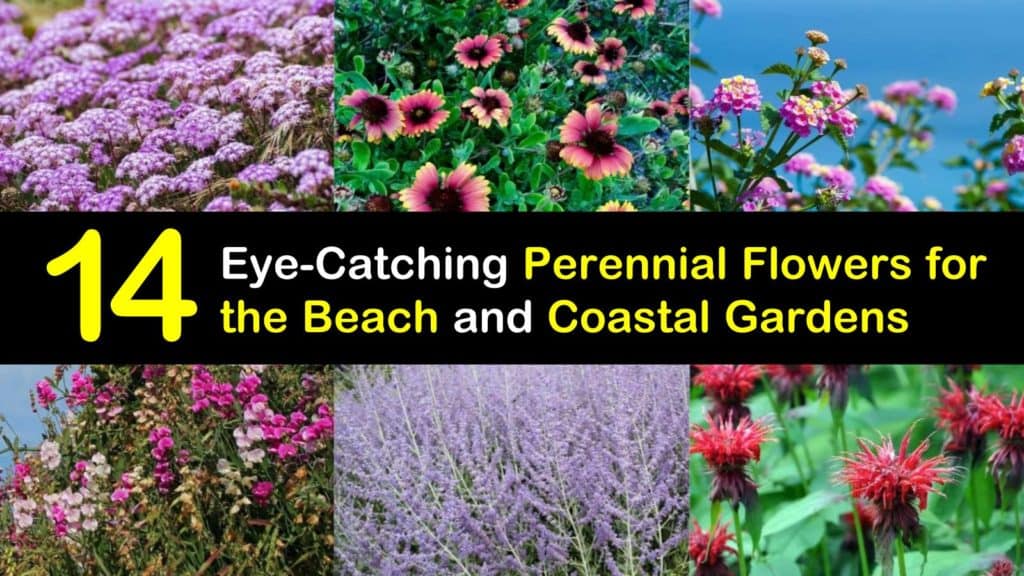
- Perennial Flowers for Coastal Gardens
- Is it Hard to Grow Flowers Near the Beach?
- Which Types of Perennials Grow Well Near the Coast?
- Where Should I Plant Perennial Flowers?
- Are Coastal Perennial Flowers Hard to Grow?
- Tickseed (Coreopsis)
- Bee Balm (Monarda) – Perennial Flowers for the Beach that Attract Hummingbirds
- Sea Aster (Tripolium pannonicum)
- Blanket Flowers (Gaillardia) – Coastal Garden Flower with Extensive Blooms
- Russian Sage (Perovskia atriplicifolia)
- Creeping Phlox (Phlox stolonifera) – Colorful Groundcover for Seaside Gardens
- Lantana (Lantana Camara)
- Black-Eyed Susan (Rudbeckia hirta) – Drought Tolerant Wildflower with Striking Blooms
- Yarrow (Achillea millefolium)
- Daylilies (Hemerocallis) – Easy to Grow Flowers in a Wide Range of Colors
- Geranium (Pelargonium)
- Sand Verbena (Abronia) – Perfect Flowering Plant for Sandy Soil
- Salvia (Salvia officinalis)
- Beach Pea (Lathyrus japonicus) – Coastal Flower with Delicate Blooms
Perennial Flowers for Coastal Gardens
What are perennial flowers? Perennials often die off at the end of the growing season but come right back up the next year. Annuals only last for one season.
Growing perennials near the beach, whether you live on the coastline of the Mediterranean or the Atlantic, is a dilemma that even green-thumbed gardeners find tasking when growing familiar flowers.
The key is to find the perfect perennials that are hardy, salt-tolerant, and grow well in your hardiness zone. Not to worry, though, as nature creates an abundance of perennial flowers that thrive along the coasts of North America.
The same applies with small landscaping shrubs. There are many varieties that work in coastal areas as well as they do in inland locations.
Is it Hard to Grow Flowers Near the Beach?
There are a few factors that come into play when trying to grow plants near the coast. Often, beachside areas have warmer temperatures during the summer months.
There is also poor soil, strong winds, and salt spray to consider. Therefore, drought-tolerant, salt-resistant, hardy plant varieties are the best choice for growing in these conditions.
Which Types of Perennials Grow Well Near the Coast?
Low growing, sturdy plants are best for growing along the coast. Choose hardy, salt-tolerant varieties, and native plants that adapt to growing in this type of climate.
Check the plant guide on your favorite flowers for the USDA hardiness zone and compare it to your location. Many kinds of flowers and plants adapt well to coastal growing, including the beach pea, coastal sedum, columbine, and ornamental grasses.
Where Should I Plant Perennial Flowers?
When planting flowers near the beach, think about planting them near a windscreen created with some fast growing privacy hedges to cut back on some of the strong breezes coming off the ocean.

Planting your flowers in groups, staking, and decorative fencing is also helpful for protecting them from wind damage.
Check the sun requirements of your flowers and place them in full sun or shade as needed. Place hardy varieties on the beachside of your home and delicate types on the opposite side to shield them from strong winds and salt.
Are Coastal Perennial Flowers Hard to Grow?
While growing flowers near the beach take some getting used to, they are easy to grow by following a few simple steps. Hose off your plants occasionally to rinse away salt deposits.
Mix organic matter into the sandy soil to help the flowers retain water while adding nutrients. Place a deep layer of mulch around the flower bed to prevent the root system from drying out. Water them deeply to promote healthy and deep root growth.
Tickseed (Coreopsis)
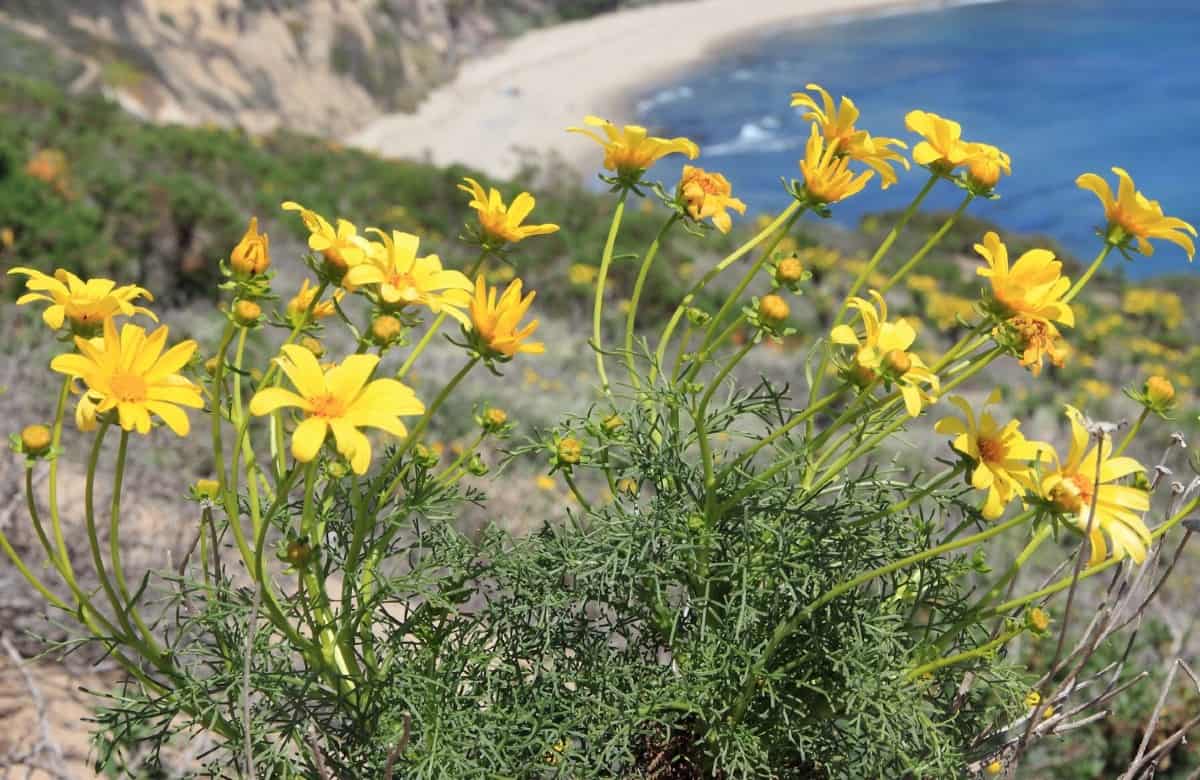
Tickseed coreopsis is a hardy plant that produces dainty yellow, orange, pink, or red flowers from summer through fall. The long-lasting blooms attract butterflies and pollinators while the seeds draw in birds.
This low maintenance flower is drought tolerant and deer resistant and grows well in containers or a flowerbed. Tickseed grows best in zones 3 through 9 and enjoys sunny locations. Depending on the type, coreopsis has an average height and spread of 1 to 3 feet.
Bee Balm (Monarda) – Perennial Flowers for the Beach that Attract Hummingbirds

This herbaceous perennial is part of the mint family, and it has aromatic leaves with a minty fragrance. Bee balm produces scarlet red, purple, white, and pink flowers with a long bloom time. These flowers for hummingbirds and other pollinators bring lots of flying wildlife to the yard.
At the same time, know that bee balm also attracts different kinds of gnats so you may not want it near your house or back patio.
Bee balm blooms from early summer through fall and makes an excellent cut flower for the home. Bee Balm has an average height of 3 feet with a spread of 2 feet.
It thrives in zones 3 through 9 and prefers sunny areas. This vigorous plant is low maintenance, deer resistant, and drought tolerant.
Sea Aster (Tripolium pannonicum)

The sea aster produces tall, daisy-like flowers in shades of pink, blue, and yellow from June through September. It grows well in salty land and rocky outcrops, making it an ideal plant for a coastal garden.
This short-lived perennial thrives in sunny locations in hardiness zones 5 through 9. Sea aster has a mature height of 3 feet tall and prefers moist, well-drained soil. While these perennials for hot summer areas thrive in this environment, they require regular watering for optimal growth.
Blanket Flowers (Gaillardia) – Coastal Garden Flower with Extensive Blooms

Blanket flowers have an extended bloom-time and produce flowers in shades of red, orange, purple, white, and yellow flowers all summer long. They attract pollinators to the yard during the summer, and birds enjoy eating the seeds in the fall.
This low maintenance plant thrives in zones 3 through 10 and prefers full sun. It is a deer-resistant, drought-tolerant groundcover flower that makes for a stunning cut flower for the home. This profuse bloomer has a mature height of 1 to 3 feet with a spread of 1 to 2 feet.
Russian Sage (Perovskia atriplicifolia)
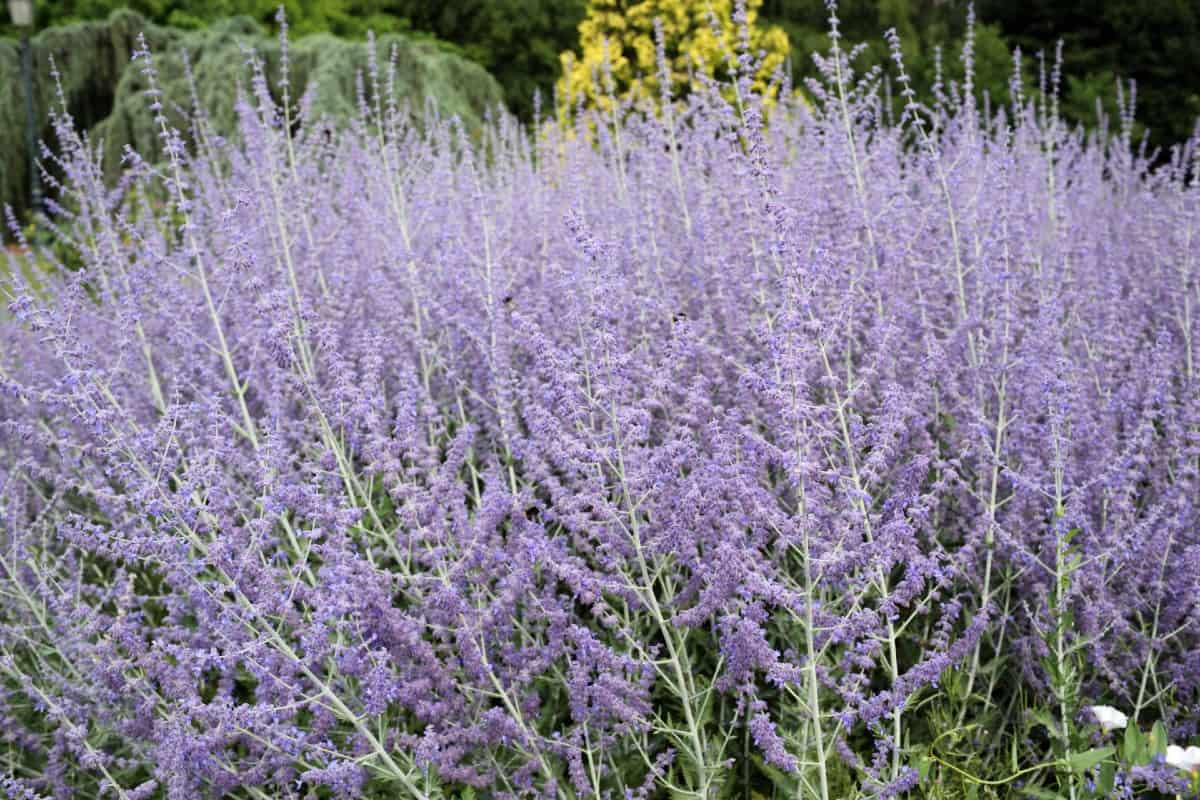
This hardy perennial grows in just about any conditions. It has gray-green silvery foliage with blue or lavender flowers throughout the summer. Its texture and color make it a great contrast plant in the garden and attract birds to the area.
Russian sage has a mature height that ranges from 3 to 8 feet with a spread of 2 to 3 feet. It thrives in sunny areas in zones 4 through 9, and it’s fragrant blooms make an excellent cut flower. It is low maintenance, deer resistant, and drought tolerant.
Creeping Phlox (Phlox stolonifera) – Colorful Groundcover for Seaside Gardens

Creeping phlox is an evergreen perennial that fills open spaces with masses of pink, purple, blue, magenta, and white flowers from mid to late spring. These fast-growing flowers blanket the ground with needle-like foliage while creating a flower carpet for nearly a month.
A low maintenance plant, the creeping phlox is drought tolerant and thrives in full sun. It grows best in hardiness zones 4 through 8, has a mature height of up to 1 foot, and a spread of up to 3 feet.
Lantana (Lantana Camara)

Lantana is a hard-working plant that survives in harsh locations where many other flowers struggle. This easy to grow plant produces colorful flowers in bright shades of red, purple, orange, white, yellow, and pink flowers from summer through fall.
This pollinator-friendly plant is low maintenance, deer resistant, and drought tolerant. It thrives in full sun and grows best in zones 8 through 11. Lantana has an average height of 1 to 3 feet with a spread of up to 4 feet, depending on the variety.
As a bonus, lantana is one of the best perennial beach plants that repel bugs like mosquitoes. Note that many people find the smell of lantana unpleasant.
Black-Eyed Susan (Rudbeckia hirta) – Drought Tolerant Wildflower with Striking Blooms
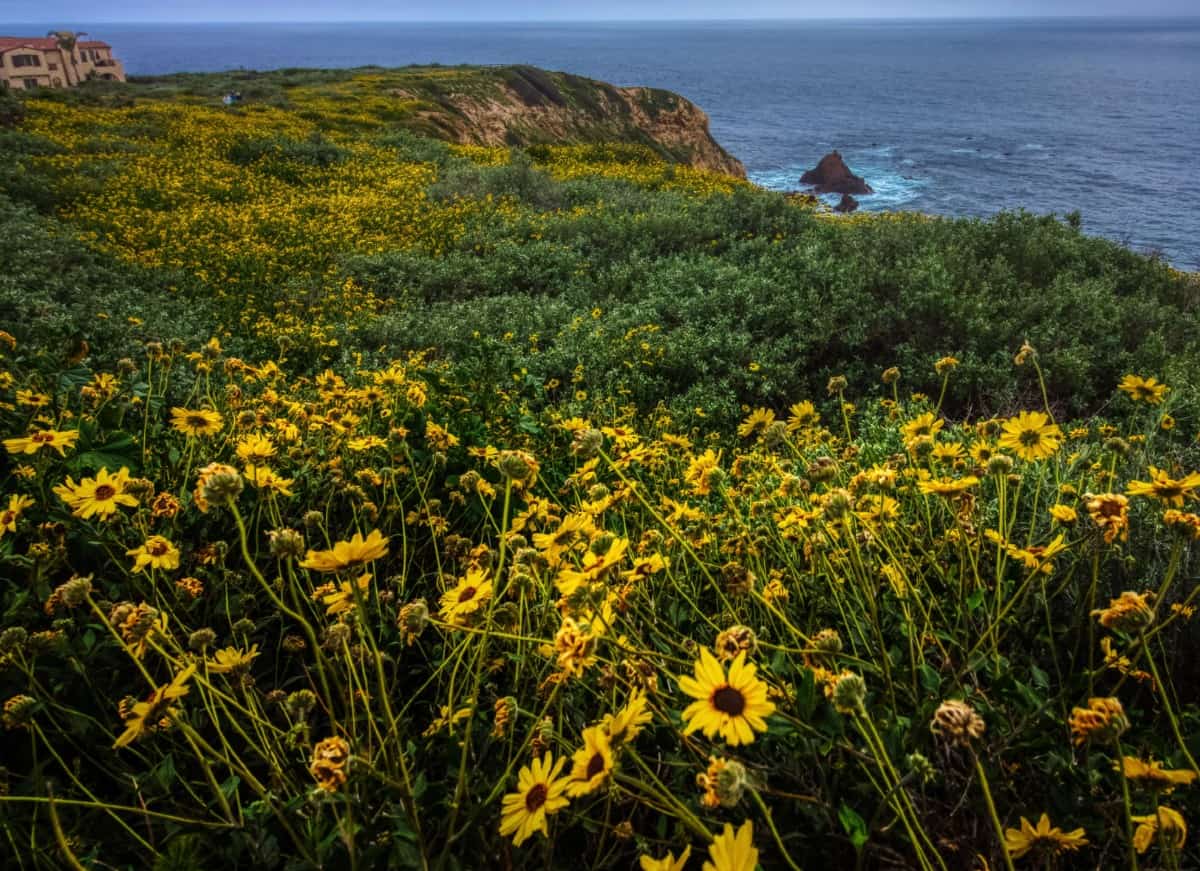
Black-eyed Susan is considered a coneflower by many, but it is a wildflower native to the meadows of eastern North America. It produces tall cut flowers with petals in bright shades of yellow, orange, and red.
This low maintenance flower attracts birds to the yard and is both deer resistant and drought tolerant. Black-eyed Susan flowers thrive in full sun in hardiness zones 2 through 11 and grow well in containers or flower beds.
Yarrow (Achillea millefolium)

This classic garden flower is well known for its ruggedness and drought tolerant growth. It has fern-like foliage and produces tall stems of flat-topped blooms, and the orange, red, yellow, white, and pink flowers attract birds to the yard.
This low-maintenance plant is deer resistant and thrives in sunny locations. It grows best in zones 3 through 10 and blooms from early spring through late fall. Yarrow has a mature height of 1 to 3 feet and a spread of 2 to 3 feet.
Daylilies (Hemerocallis) – Easy to Grow Flowers in a Wide Range of Colors

There are so many cultivators of daylilies registered that you are bound to find the perfect one for your coastal garden. They are hardy and one of the easiest perennials to grow. The daylily produces fragrant blooms in shades of purple, red, yellow, orange, white, and pink flowers during the summer months.
Daylilies are low maintenance and enjoy partial shade to full sun. They grow best in zones 3 through 10, are drought tolerant, and reach an average height and spread of 1 to 3 feet.
Geranium (Pelargonium)

This old fashioned flower is one of the most popular plants for gardening, and its hardy nature makes it ideal for just about any garden. Geraniums produce colorful flowers in shades of red, orange, purple, white, and pink.
Regular deadheading of the blooms encourages an abundance of flowers. Geraniums thrive in dry, hot conditions and enjoy full sun in zones 10 and 11.
They are low maintenance, deer resistant, and drought tolerant. These pretty flowers bloom from spring through fall and reach a mature height of up to 3 feet and 2 feet wide, depending on the variety.
Sand Verbena (Abronia) – Perfect Flowering Plant for Sandy Soil
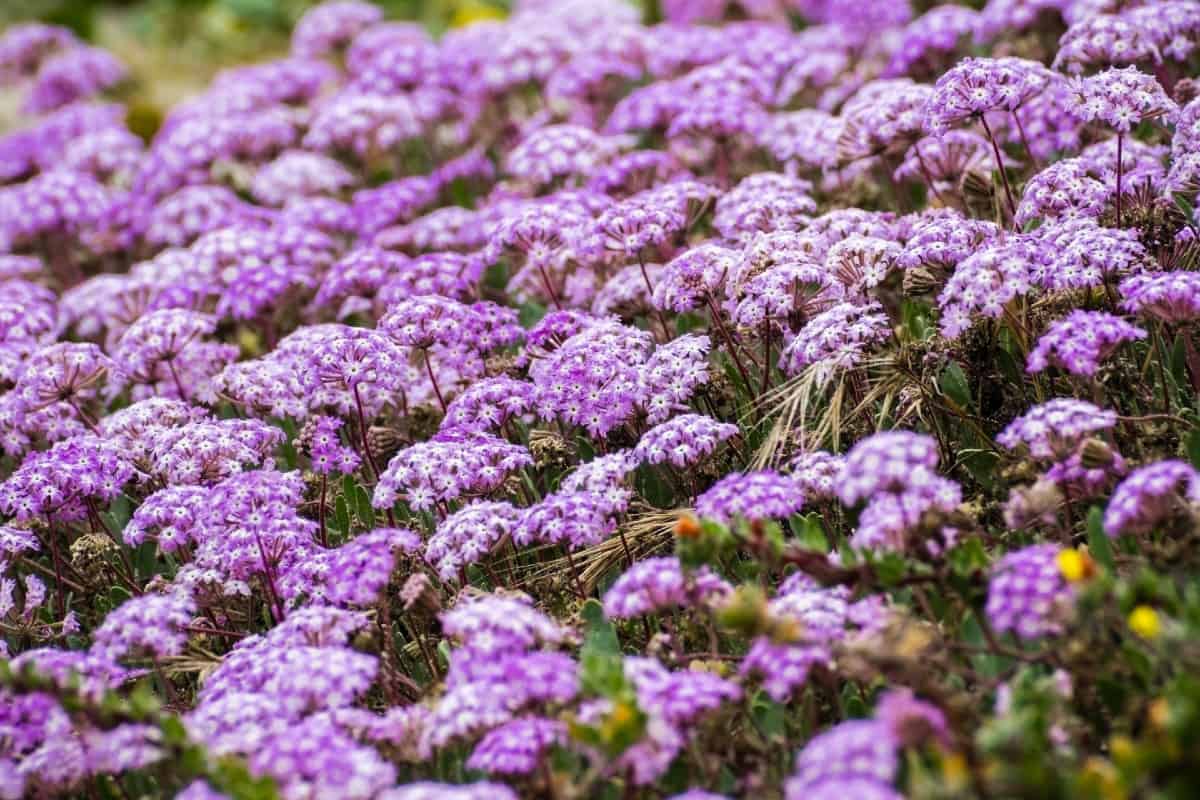
Sand verbena thrives in very sandy areas, so a seaside garden is the perfect growing place for these flowers. They produce fragrant, purple and white flowers that continuously bloom with warm temperatures and fertilization.
This hardy perennial is drought tolerant and enjoys full sun. It thrives in hardiness zones 3 through 9. Sand verbena is a low growing plant that reaches a height of 3 to 18 inches tall.
Salvia (Salvia officinalis)
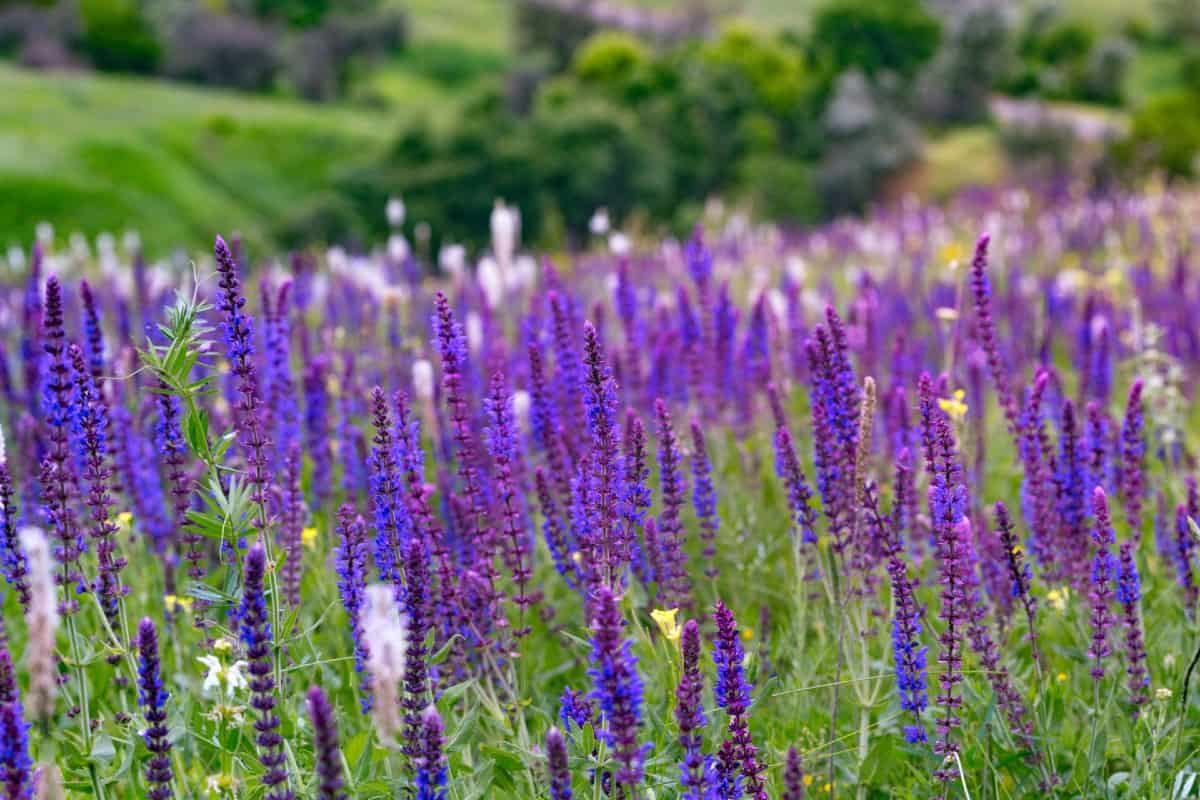
Salvia is a mint relative with a long blooming time. It produces tall spikes of white, purple, red, pink, and blue flowers from spring through summer with a fragrance that attracts birds to the garden.
This drought tolerant plant is deer resistant and enjoys part to full sun. It is low maintenance and thrives in zones 3 through 10. Salvia has an average height and width of 3 feet and grows well in containers or a garden.
Beach Pea (Lathyrus japonicus) – Coastal Flower with Delicate Blooms
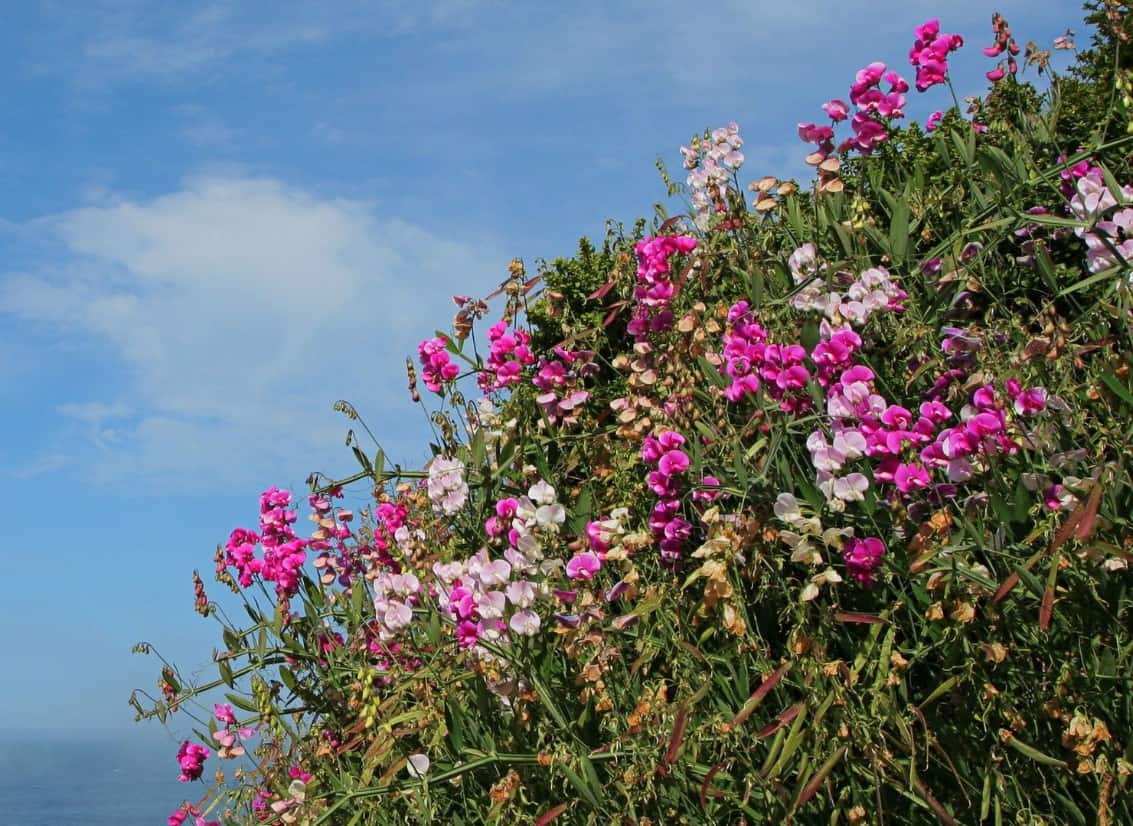
The dainty and fragrant flowers of the beach pea attract bees, butterflies, and birds, and bloom in shades of pink, magenta, and blue. They grow well as a groundcover, forming loose mounds of colorful flowers from spring to mid-summer.
Beach pea flowers thrive in zones 3 through 8 and grow best in salty soil. They climb on tendrils but are happy to trail across the ground and spread up to 2 feet. They require regular watering and full sun conditions.
Growing common flowers along the coast is not the easiest thing to do, even for the most seasoned grower. It takes a special plant to handle the harsh conditions of the ocean, from sandy soil to salty air.
Fortunately, nature created the perfect flowers and plants that are both hardy and tolerant, making them ideal for tough growing situations.

We hope you enjoy creating seaside gardens by planting perennial flowers for the beach, and we’d love it if you’d share our coastal flower and plant list and tips with your family and friends on Pinterest and Facebook.